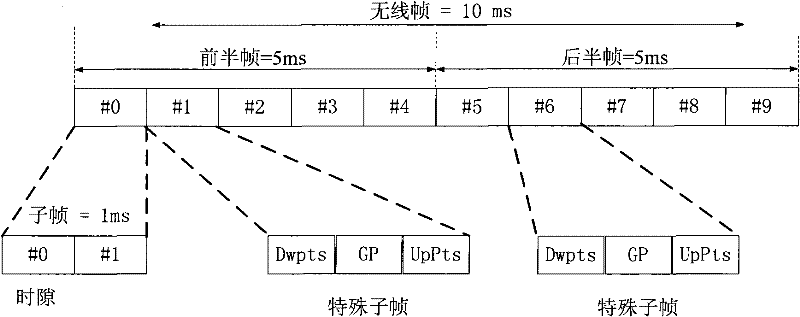Primary cell searching method for long term evolution (LTE) system
A technology of cells and cell groups, applied in advanced technology, access restrictions, electrical components, etc., can solve problems affecting terminal performance, reduce the efficiency of initial cell search, etc., reduce blindness, reduce the number of times to interpret cell broadcast messages, The effect of shortened time
- Summary
- Abstract
- Description
- Claims
- Application Information
AI Technical Summary
Problems solved by technology
Method used
Image
Examples
specific Embodiment 1
[0068] The overall process of this embodiment is as follows image 3 shown.
[0069] 1. After the UE is powered on, check whether there is frequency point information saved in the BA table. If there is, perform step 2, otherwise perform step 10;
[0070] 2. The UE selects a frequency point that has not yet calculated the corresponding power value, and calculates the NID1 and NID2 of the frequency point;
[0071] The calculation method is to use the formula CELLID=3×NID1+NID2 to calculate NID1 and NID2 according to the CELLID in the frequency point information;
[0072] 3. Generate a local primary synchronization signal and a local secondary synchronization signal corresponding to the frequency point according to the NID1 and NID2;
[0073] Generate a local primary synchronization signal corresponding to the frequency point according to the cell group identifier of the frequency point;
[0074] Generate a local secondary synchronization signal 1 corresponding to the first ha...
specific Embodiment 2
[0103] The overall process of this embodiment is as follows Figure 4 shown.
[0104] 1. After the UE is powered on, check whether there is frequency point information saved in the BA table. If there is, perform step 2, otherwise perform step 8;
[0105] Steps 2~3 are identical with specific embodiment 1;
[0106] 4. The UE receives data with a length of half a radio frame on the frequency point;
[0107] 5. Carrying out sliding correlation between the local primary synchronization signal corresponding to the frequency point and the received data, to obtain a power array of primary synchronization correlation numbers corresponding to the frequency point;
[0108] 6. Carry out sliding correlation between the local secondary synchronization signal 1 and the local secondary synchronization signal 2 respectively with the received data, to obtain the secondary synchronization correlation power array 1 and the secondary synchronization correlation power array 2 corresponding to th...
PUM
 Login to View More
Login to View More Abstract
Description
Claims
Application Information
 Login to View More
Login to View More - R&D
- Intellectual Property
- Life Sciences
- Materials
- Tech Scout
- Unparalleled Data Quality
- Higher Quality Content
- 60% Fewer Hallucinations
Browse by: Latest US Patents, China's latest patents, Technical Efficacy Thesaurus, Application Domain, Technology Topic, Popular Technical Reports.
© 2025 PatSnap. All rights reserved.Legal|Privacy policy|Modern Slavery Act Transparency Statement|Sitemap|About US| Contact US: help@patsnap.com



